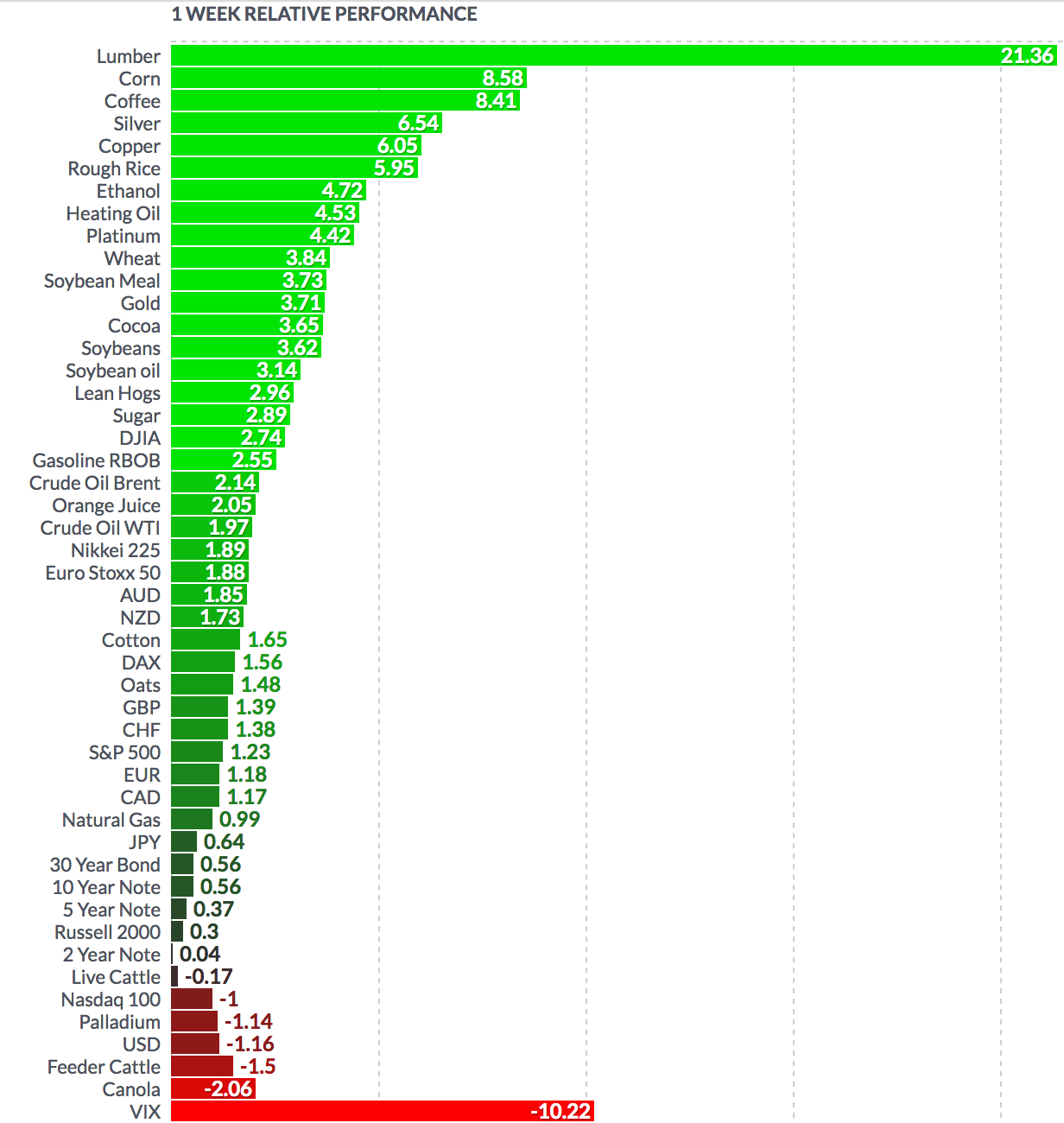Market Indexes
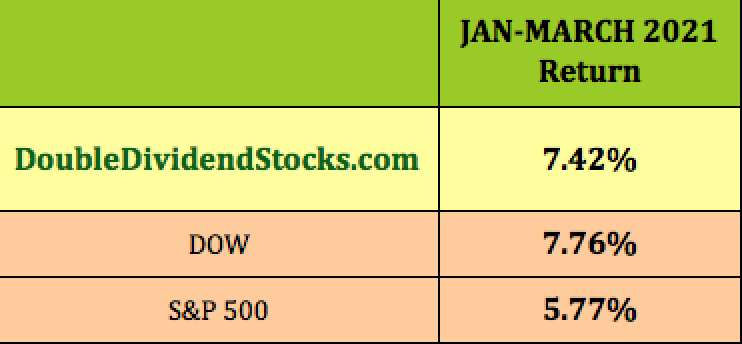
The indexes had a mixed performance last week, with the Dow and the S&P leading, while the NASDAQ lost -1.5%, and the small caps roughly flat.
The DOW and S&P hit new records on Friday, after a disappointing April jobs report eased worries over rising rates.
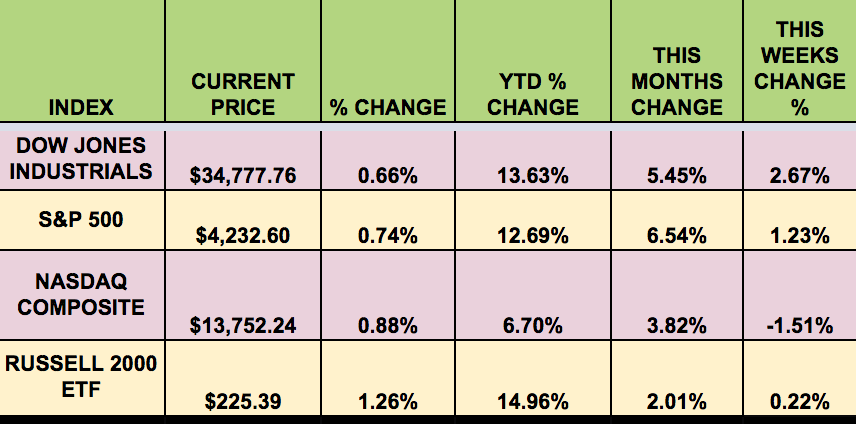
Volatility
The VIX fell 12.1% last week, ending at $16.64.
High Dividend Stocks
These high dividend stocks go ex-dividend this week: Sunoco LP (NYSE:SUN), Hercules Capital Inc (NYSE:HTGC), Westlake Chemical (NYSE:WLK) Partners LP (NYSE:WLKP), Artisan Partners Asset Management Inc (NYSE:APAM), Devon Energy Corporation (NYSE:DVN), Enviva Partners LP (NYSE:EVA), Enbridge Inc (NYSE:ENB), Goldman Sachs BDC Closed End Fund (NYSE:GSBD), Maiden Holdings (NASDAQ:MHLD) North America Ltd ELKS (NYSE:MHNC), Oxford Square Capital Corp (NASDAQ:OXSQ), Rattler Midstream LP (NASDAQ:RTLR), Trendevice Spa (MI:TDE), B. Riley Financial Inc (NASDAQ:RILY).
Market Breadth
22 out of 30 DOW stocks rose last week, vs. 12 the previous week.
62% of the S&P 500 rose, vs. 52% the previous week.
Forex
The US $ reversed and fell vs. most major currencies last week.

Economic News
According to Reuters:
“The 266,000 jobs that U.S. firms added in April give Federal Reserve policymakers little reason to do anything but keep the monetary policy tap wide open until it is clear the economy is on a path back to full employment."
The unemployment rate rose to 6.1% and remains well above the 3.5% it reached in the months before the pandemic, the Friday report showed. Just 57.9% of the population was working, the report showed, well short of 61.1% as of February 2020. And the economy is still short more than 8 million jobs compared to its pre-crisis level. A Reuters poll of economists had predicted the economy would add 978,00 jobs in April.
Also from Reuters:
“This puts less pressure on the Fed to prematurely talk about tapering. They wanted to be patient and hold off on it,” said Larry Adam, chief investment officer at Raymond James in Baltimore, Maryland. The Fed in December said it would not consider changing monetary policy, and particularly its $120 billion in monthly bond purchases, until there had been “substantial further progress” in reaching its full employment and 2% inflation goals.”
“U.S. Treasury Secretary Janet Yellen said on Tuesday that she does not anticipate that inflation will be a problem for the U.S. economy, as price increases during the recovery should be transitory. Yellen, speaking to a Wall Street Journal event, clarified earlier remarks that interest rates may need to rise modestly to prevent the economy from overheating. “It’s not something I’m predicting or recommending,” she said.”
“The number of Americans filing new claims for unemployment benefits fell below 500,000 last week for the first since the COVID-19 pandemic started more than a year ago, signaling the labor market recovery had entered a new phase amid a booming economy. That was reinforced by other data on Thursday showing U.S.-based employers in April announced the fewest job cuts in nearly 21 years. The reports added to other upbeat employment data in suggesting that the economy enjoyed another blockbuster month of job growth in April.
"But the labor market is not out of the woods yet, with about 16.2 million people still collecting unemployment checks.
“The ISM’s index of national factory activity fell to a reading of 60.7 last month after surging to 64.7 in March, which was the highest level since December 1983. A reading above 50 indicates expansion in manufacturing, which accounts for 11.9% of the U.S. economy. Economists polled by Reuters had forecast the index edging up to 65 in April.
"The White House’s massive $1.9 trillion pandemic relief package and the expansion of the COVID-19 vaccination program to all adult Americans have led to a boom in demand, which is pushing against supply constraints. Federal Reserve Chair Jerome Powell said last week the U.S. central bank expected the bottlenecks would be resolved as workers and businesses adapted and “we think of them as not calling for a change in monetary policy.” Inventories at factories and customers are extremely lean, which should keep production humming.”
“New orders for U.S.-made goods rebounded in March and business spending on equipment was stronger than initially estimated, boosted by robust domestic demand, though momentum could slow because of bottlenecks in the supply chain. The Commerce Department said on Tuesday that factory orders increased 1.1% in March after falling 0.5% in February.
"The Institute for Supply Management reported on Monday that manufacturing activity grew at a slower pace in April, restrained by shortages of inputs. Most economists expect double-digit GDP growth this quarter, which would position the economy to achieve growth of at least 7%, which would be the fastest since 1984. The economy contracted 3.5% in 2020, its worst performance in 74 years.
"Factory goods orders in March were boosted by strong demand for machinery, motor vehicles, fabricated and primary metal products. But orders for electrical equipment, appliances and components decreased. Unfilled orders at factories rose 0.4% after surging 0.9% in February.
"The Commerce Department also reported that orders for non-defense capital goods, excluding aircraft, which are seen as a measure of business spending plans on equipment, jumped 1.2% in March instead of increasing 0.9% as reported last month. Business spending on equipment recorded a third straight quarter of double-digit growth in the first quarter.”
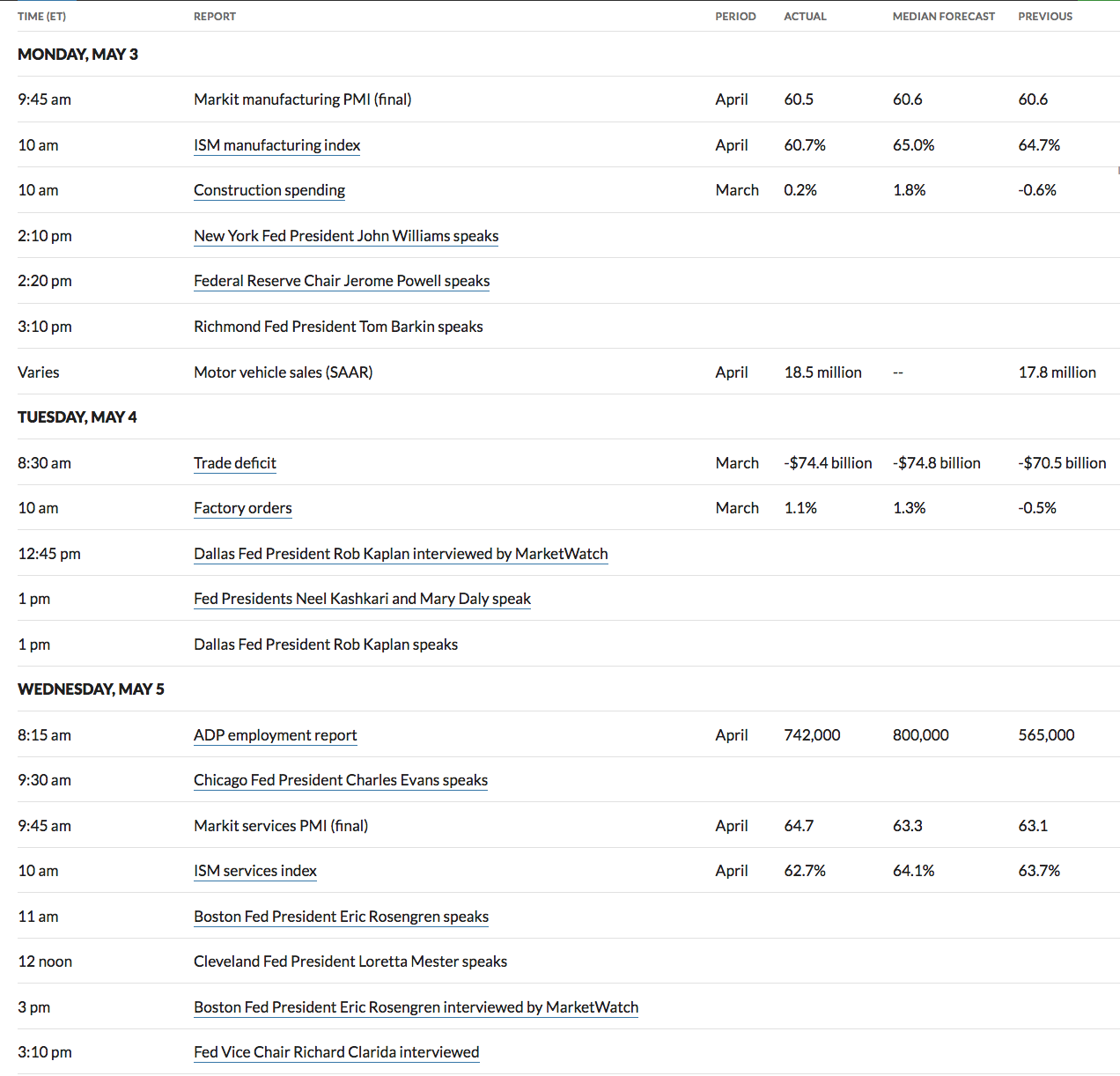
Week Ahead Highlights
Q1 earnings season begins to wind down. Walt Disney Company (NYSE:DIS) will report earnings, in addition to a handful of other big caps, including Duke Energy (NYSE:DUK). and retail REIT Simon Property Group (NYSE:SPG).
US Economic Reports
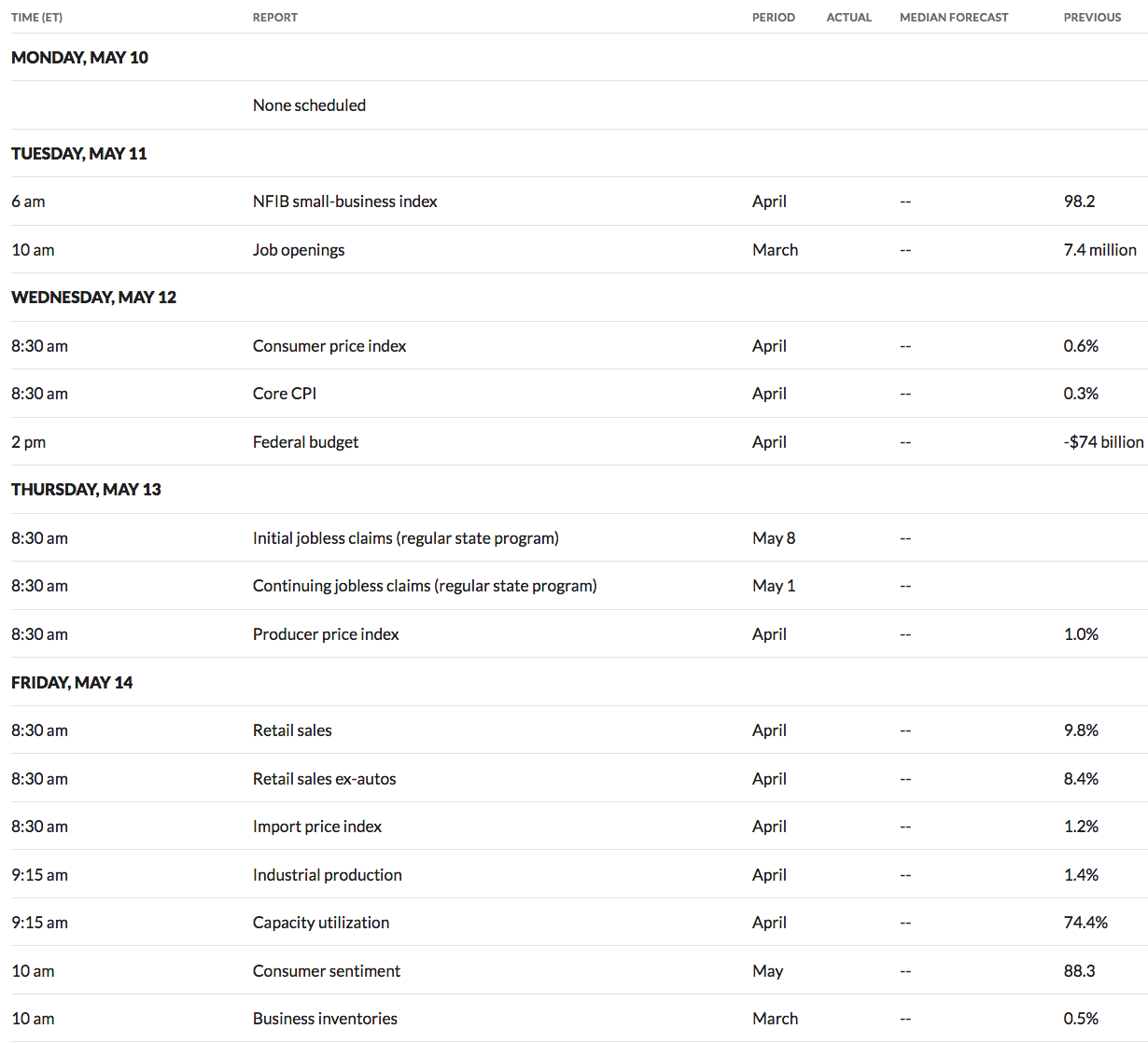
Sectors
The Energy sector led again last week, while the Utilities sector lagged.
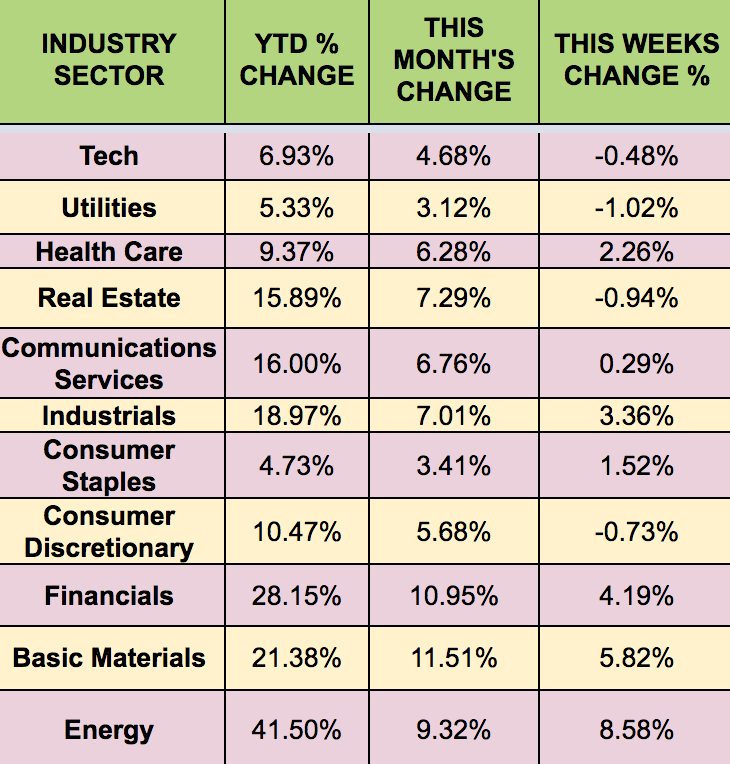
Futures
WTI crude rose 1.97%, ending at $64.90.
